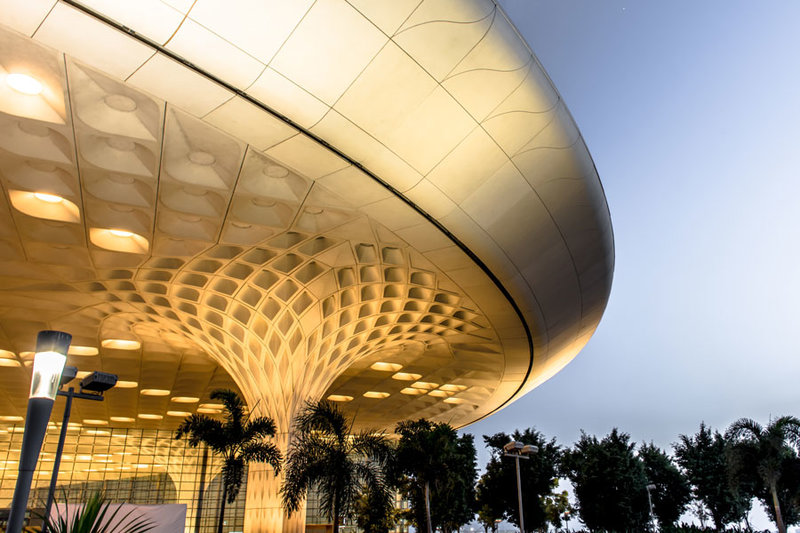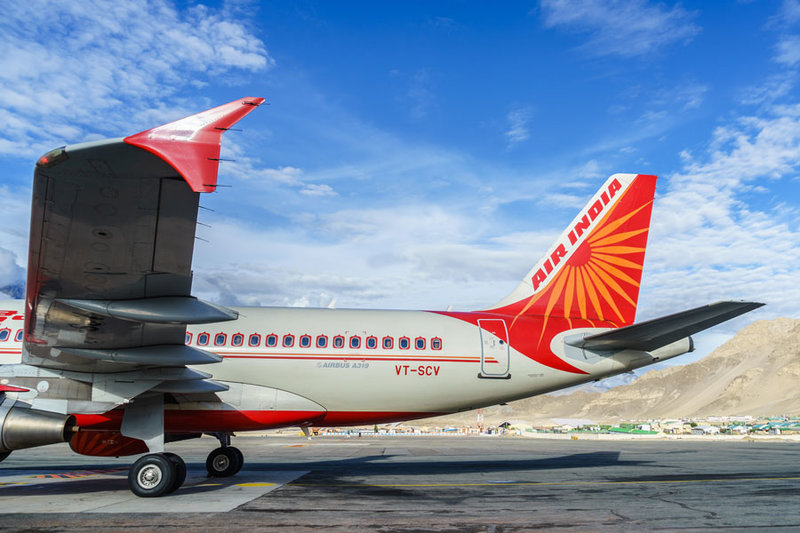Regional Focus
India’s airports feel the heat as passenger numbers soar
The
future
of US air
traffic control:
the third option?
Indian airports are straining to meet demand, as the country’s aviation market experiences unprecedented growth. Will big infrastructure projects in the pipeline be enough to stave off a capacity crisis? Eva Grey finds out
I
ndia’s airports are bursting at the seams. Following the country’s economic liberalisation in 1991, India has experienced consistent economic growth. Since low-cost operators started entering the market in 2005-2006, increasing competition and lowering fares, traffic has skyrocketed.
Today, India's aviation market is experiencing the fastest expansion in the world – an enviable position to be in, if it wasn’t for one big problem: the country’s airports are struggling to meet demand.
According to the Centre for Aviation’s (CAPA) latest outlook on India, current airport capacity is up to 317 million passengers, but this year, traffic could be close to 300 million. It warns that the country could exceed its maximum structural capacity by 2022, or if growth continues at a faster rate than 10% (which is highly likely), capacity thresholds will be breached even earlier.
“India hasn't dealt with this growth so well,” says Neeladrinath Sarangi, senior manager at CAPA India. “A lot of this growth has been profitless growth. In India, the aviation sector is challenged in terms of costs: they have a high taxation environment, fuel taxes are significant, and the other input costs for running an airline are also significant.”
The government is well aware of this dire situation. CAPA’s estimation is that India will require between $36bn and $45bn worth of investment in around 55 airports by 2030, to create an additional 500-600 million-passenger capacity.
In April, the government announced plans to build 100 more airports for one billion flyers by 2035, at an estimated cost of $60bn. But how realistic is this plan, and can the industry respond fast enough to meet rising demand?
Image courtesy of
Pushed for space: airports operating above capacity
In India, the Ministry of Civil Aviation is responsible for the formulation of national policies and programmes for the development and regulation of civil aviation, as well as devising and implementing schemes for the growth and expansion of civil air transport.
In 2016, it formulated its National Civil Aviation Policy, which stated that, thanks to its ideal geographical location between the Eastern and Western Hemisphere, a strong middle class of 300 million Indians, and a rapidly growing economy, “India has the potential to be among the global top three nations in terms of domestic and international passenger traffic”.
The policy’s vision, to create an ecosystem to make flying affordable for the masses, was achieved: over the past two years, the country recorded double-digit growth in its domestic air passenger traffic, according to data from the International Air Transport Association. The growth, however, superseded the speed at which infrastructure improvements were being added, leading to a completely new form of crisis: too many passengers, not enough space.

Image courtesy of
India’s top airports, such as Mumbai, Delhi and Chennai, are particularly struggling. After maximising capacity at the current sites, even with a relatively conservative growth rate of 10% per year, Delhi and Chennai will reach capacity within four to six years, while Pune and nine other airports are already operating above their design capacities. Once the existing airport sites are completely built out, the maximum structural capacity of Indian airports is estimated to reach 431-463 million passengers per year, CAPA says.
“The primary example is Mumbai,” Sarangi says, “which has two intersecting runways, and is also land-constrained so it can't expand these on either side or construct a new one. So this airport is experiencing tremendous challenges and cannot grow any further.”
At the same time, airlines are expected to introduce close to 350-400 aircraft over the next five years.
Eero Knuutila is Head of Service Development at Helsinki Airport.
Image courtesy: Helsinki Airport
The maximum structural capacity of Indian airports is estimated to reach 431-463 million passengers per year
Government eyes big expansion
The government has been keen to announce big investment and grand infrastructure projects devised to relive pressure.
By far the most eye-catching announcement came from India’s Minister for Civil Aviation Jayant Sinha, who told the Nikkei Asian Review in April that the government plans to spend $60bn on doubling the number of airports it operates, essentially promising to build 100 new airports before 2035. Of these, 70 would be built in areas that do not currently have an airport, with the remainder becoming secondary airports.
Encouragingly, some of the work has already begun.

Image courtesy of Chansak Joe / Shutterstock.com
Last year, a plan to build a second $3bn airport for Delhi was announced. The Noida International Airport will be located 72km from Indira Gandhi International and will encompass four runways. The airport is expected to handle 30-50 million passengers per year over the next 10-15 years.
In January, Airports Authority of India (AAI) chairman Guruprasad Mohapatra reported plans to develop New Pune International Airport, at a cost of $2.1bn, while one month later Prime Minister Narendra Modi laid the foundation stone of Navi Mumbai Airport, to be built at a cost of $2.5bn. The first phase of this airport is expected to be complete by the end of 2019.
And in May, AAI revealed further plans to invest $3bn in airport infrastructure and capacity expansion projects at more than 20 airports within the next four to five years. The biggest works will be done at Lucknow, Chennai and Guwahati airports.
The Noida International Airport will be located 72km from Indira Gandhi International and will encompass four runways
There’s plenty of will – but can India find a way?
Asked whether he thinks this flurry of investment is possible, Sarangi isn’t convinced.
“Realistically speaking, probably not,” he says. “Most definitely, political intent is there, but when you look at the track record of execution, historically it has been very difficult to develop infrastructure on a scale and at a pace that has been envisioned here. Starting from land acquisition, getting approvals, all of that will take time.”
CAPA estimates that in order to build only 55 new airports, 150,000-200,000 acres of land would be required. But land acquisition in India is a difficult, lengthy process, while the physical space needed for such undertakings is becoming increasingly scarce.
There are issues with capital investment, too.
“The experience of private airport developers is somewhat mixed. They have developed very good airport infrastructure, but not all of them have made significant returns. So in terms of the financing side, getting private interest will not be very easy.
“The way that the airports are economically regulated, one of the interesting things that you will notice is that the better the private airport operator performs, the higher the bar is raised. So for every subsequent five to ten year period after concession, the airport operator has to become even more efficient. That's a system that actually penalises efficiency. As a result, it can be difficult to get private parties interested in funding airports developments.”

Image courtesy of Tooykrub / Shutterstock.com
Sarangi believes that there is plenty of scope for more incremental enhancements of existing infrastructure, which do not require large capital outlays and long gestation times of new or expanding airports.
But what is required now, above all, is focused policy and regulatory action. “You need to set up staff forces and committees who can really bring the stakeholders together and get things going in the right direction,” he says. “And the other part is also the technical expertise, having the right people in the right places and possibly consultants who have expertise in those areas to enhance efficiency.
“We don't really have a track record which supports such an ambitious undertaking, but it is something that the government has to do, because without achieving these targets, it is very likely that capacity constraints will ensure that we don't meet demand. But they are ambitious targets nonetheless.”
Eero Knuutila is Head of Service Development at Helsinki Airport.
Image courtesy: Helsinki Airport
[Private airport developers] have developed very good airport infrastructure, but not all of them have made significant returns